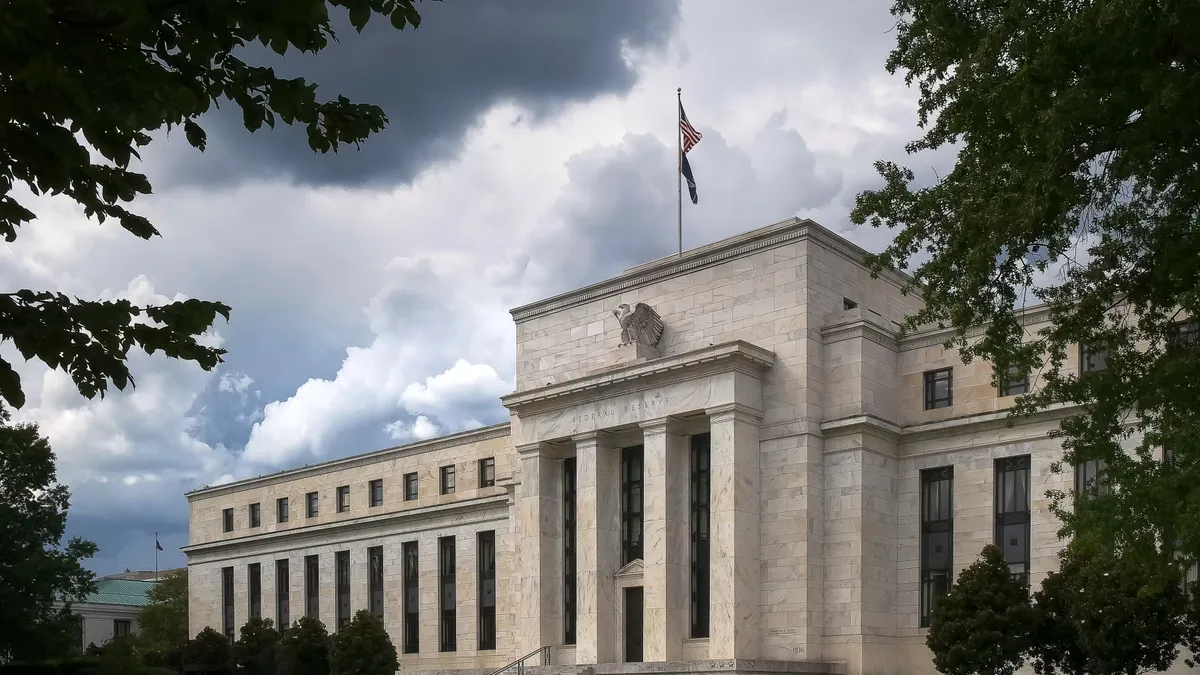Dive Brief:
- Federal Reserve officials are looking beyond the credit contraction caused by recent banking turmoil and holding firm to an intent to hike the main interest rate at least once more in 2023 before pausing to gauge the success of the most aggressive monetary tightening in four decades.
- In order to slow inflation to its 2% goal, the central bank should move monetary policy “somewhat further into restrictive territory this year, with the fed funds rate moving above 5% and the real fed funds rate staying in positive territory for some time,” Cleveland Fed President Loretta Mester said Tuesday. She does not expect a reduction in the federal funds rate this year.
- Mester’s comments aligned with those of Boston Fed President Susan Collins, who said on March 30 that “inflation is still too high” and predicted “some modest additional policy tightening, and then holding through the end of this year.” Policymakers on March 22 increased the main interest rate by a quarter percentage point to a range between 4.75% and 5%.
Dive Insight:
Fed officials, in a median projection, forecast last month that the central bank will raise the federal funds rate to 5.1% by the end of this year.
Investors have their doubts — they believe that the Fed in 2023 will soften its fight against inflation and that CFOs will see borrowing costs decline as the year unfolds.
Investors on Wednesday set 39% odds that by the end of 2023 the Fed will trim the main interest rate by 0.75 percentage points, according to the CME FedWatch Tool. They saw 25% odds of a full percentage point reduction before January and 24% odds of a half-point cut, according to CME, which calculates expectations based on trading in interest-rate futures markets.
“We’ve seen periods where the markets have one view of what’s going to happen in the economy and the Fed has another view,” Mester said Wednesday during a Bloomberg Television interview.
“We see things a little bit differently in terms of what the appropriate monetary policy is, given where the economy is and where it’s going,” she said, adding that she believes the central bank will need to hike the main rate beyond the projected 5.1%. “We certainly are focused on inflation, and making sure that inflation gets back down to 2% over time.”
The banking system turmoil triggered by the March 10 failure of Silicon Valley Bank will probably cause a credit squeeze, with an impact far greater than a quarter-percentage-point increase in the federal funds rate, according to Ashish Shah, chief investment officer of public investing at Goldman Sachs Asset Management.
“I think the Fed is going to have to pivot,” he said in a report, adding that a credit contraction could effectively make the federal funds rate as much as 2 percentage points too high. “At the very least they’re going to set a higher bar for continuing to raise rates because conditions have clearly tightened.”
Collins said she welcomed different viewpoints about the path for monetary policy and acknowledged that banking turmoil clouded the outlook for credit. “The breadth of discussion is important,” she said, adding that she believes the central bank will maintain a tight policy stance through 2023.
“One of the lessons from history that I think is important is that policy that doesn’t stay the course is more likely not to get inflation under control, then requiring the central bank to do even more and have a more significant disruption to labor markets in order to be successful,” Collins said at an event sponsored by the National Association for Business Economics.












